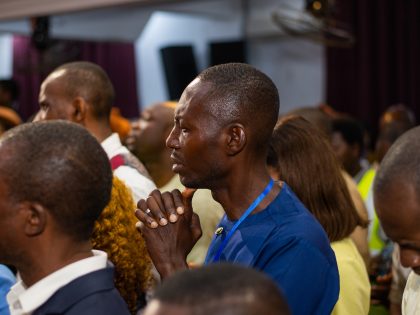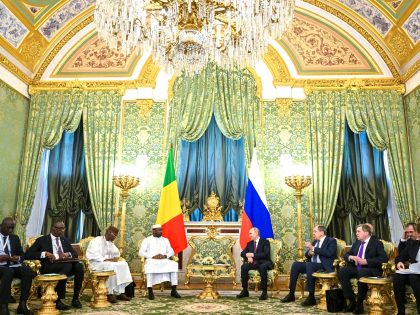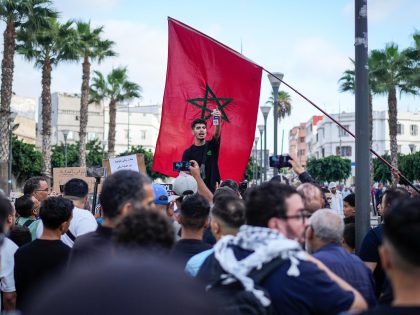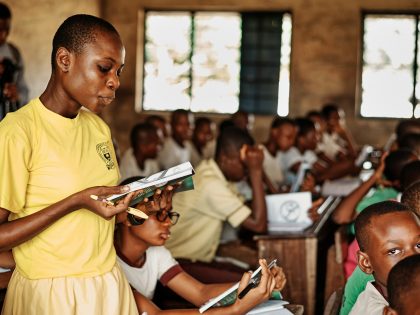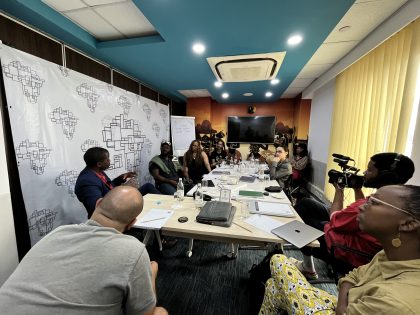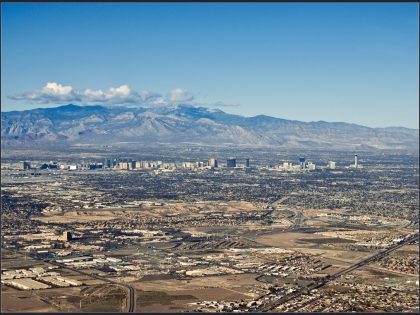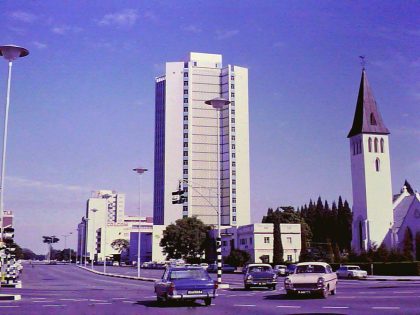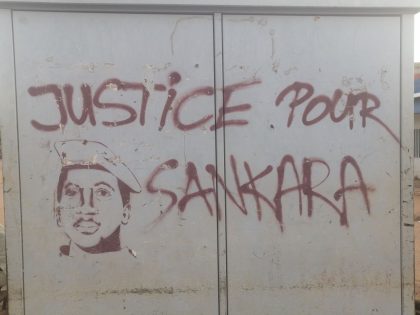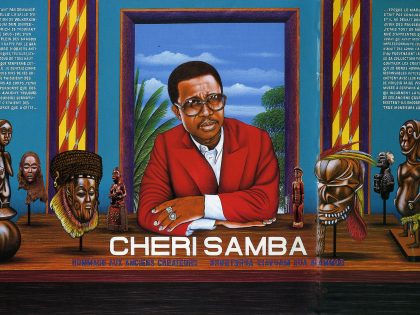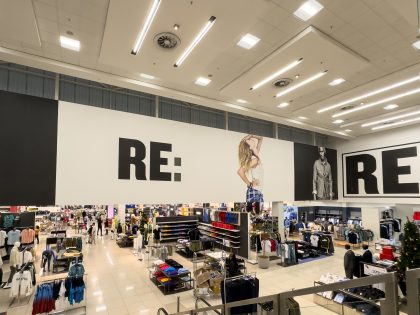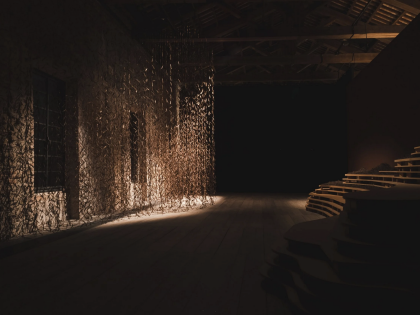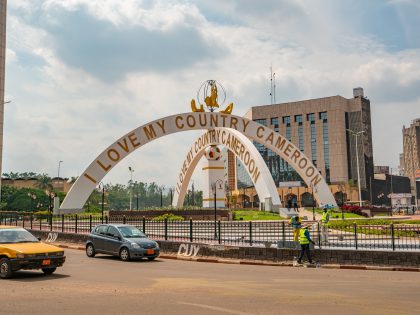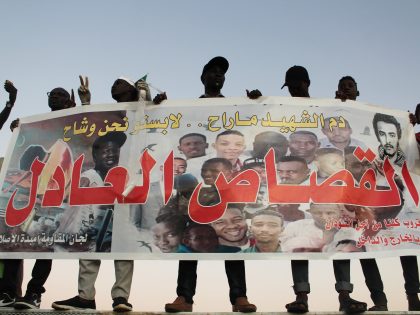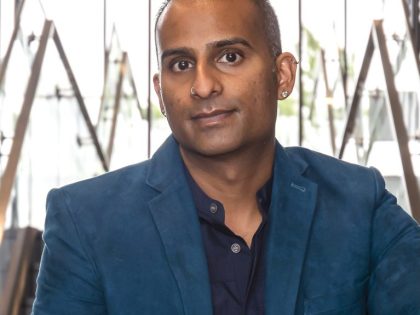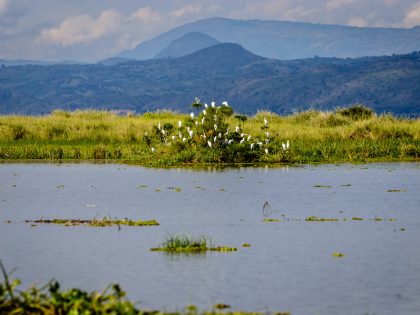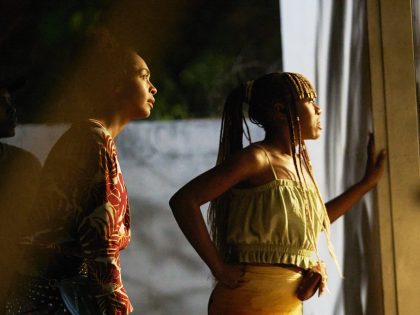A History in Fragments
The recent explosions in the Stade de France was one of the most surreal things to ever take place in a stadium built nearly two decades ago specifically to house history.

The Stade de France (Wiki Commons).
The French national team player Patrice Evra was dribbling up the pitch when the second bomb exploded. Two minutes earlier, the same thing had happened: a loud, resonating explosion heard by the 65,000 fans gathered to watch a friendly match between Germany and France. There was a wave of shouts – not quite a cheer, almost something like tens of thousands of people saying “whoa,” or “what”? – but no panic. People mostly seem to have thought it was a loud firework, perhaps a flare exploding in one of the tunnels. Football games are full of noise, after all, and sometimes explosions. So the game went on.
A stadium, these days, can be a curious bubble. Millions watch what happens there on television, but when you are inside you can easily be relatively cut off from the broader world. With tens of thousands of people in one place trying to tweet, text, instagram, you often can’t get cell service. So it was that those gathered in the stadium were among the few in Paris not to quickly find out what was going on. People rarely leave their seats during a football match – the pace is constant, you might miss one of the few goals – and the halls and entrances are mostly empty, a kind of buffer.
But around them, over the course of a little over a half hour, three suicide bombers set off bombs in and around the Stade de France. One was caught by security trying to enter the stadium, and set off his bomb as he backed away from the security checkpoint. Another detonated his bomb on a street that runs along one side of the stadium. It is named after Jules Rimet, a French World War I veteran who created the World Cup in the early twentieth century. A third bomber followed suit near a McDonald’s nearby. At least two people were killed in these attacks, and many more were injured.
When he heard the second explosion, Evra stopped for a minute, pondering the echoing sound. He looked up but – ever the footballer – had the presence of mind to pass the ball back to a teammate. A German player trotted after it, a little languidly. It was just a banal moment in the midst of a football match, but slightly off kilter, slowed down.
Evra was born in Senegal of a father from Guinea and mother from Cape Verde, but grew up in France. He is one of many players on the French national team of African descent. What was he thinking when he heard that explosion? Did he wonder, for a moment, whether continuing to play was a kind of madness? Or did he, and the other players, make the same decision that many are now saying we should: that in the face of horror the only thing to do is to keep playing, moving, living?
Watching it now – knowing all that we do about what happened Friday night in Paris – we can perhaps count it as one of the most surreal things to ever take place in this storied stadium, a place built nearly two decades ago specifically to house history.
July, 12, 1998
The Stade de France was built for the 1998 World Cup in France. It is in Saint-Denis, a northern suburb of the city famous for its ancient basilica and, more recently, as one of the banlieue regions often depicted primarily as sites of poverty, conflict with the police, and fertile ground for Islamist militancy.
When Smail Zidane, the father of the great French footballer Zinedine Zidane, had migrated to France in 1953 from Algeria, he worked for a time on a construction site in Saint-Denis. Without enough money to pay rent, he slept on the construction site. His son Zinedine grew up in Marseille, playing football in the plaza or the project where he lived. He didn’t like to head the ball, and when he was recruited to a football training academy at the age of thirteen had to be taught how to do it. But in the final of the 1998 World Cup, Zidane used his head to score first one goal, then another, against the Brazilian team.
His head won France its first ever World Cup, in the Stade de France. After he scored, he ran to the side of the pitch where his friends from his project in Marseille were in the stands. “We looked at each other,” he remembered later, with “a profound look, as vast as the football fields that we ran around on as kids.” Locked in an embrace for a long time with his friends, Zidane could smell “all those Marseille afternoons” as his friends shouted in his ear: “you’re the kid from the cité, our buddy who scored those two goals.”
On the way back from the stadium – as deliriously happy French fans were flooding the streets for what would become several days of celebration, often chanting “Zidane President!” – he began thinking about “the murmurs that were rising up from the paths of the village where my father was born.”
Looking back on that evening a few weeks later, he described his goals as a testament to the possibility of Algeria and France reconciled: “it was the son of a Kabyle that offered up the victory, but it was France that became champion of the world. In one goal by one person, two cultures became one.” The evening of the victory, after they had collected their trophy and shaken hands and had their picture taken, even after many of the fans had left, players from the French team remained on the pitch at the Stade de France, sitting, chatting, enjoying themselves almost like they were at a picnic on a Sunday afternoon.
November 13, 2015
Just before the half, France scored a goal against Germany, to the cheers of the crowd. The players still didn’t know what was going on, nor did the fans, at least most of them, at least not enough to create a panic. But President François Hollande, who was in attendance at the match, was quietly escorted out of the stadium, heading to out to speak to the press, and then to visit the sites of the carnage around Paris.
During the half, the team coaches learned the news, but decided not to tell the players. The match officials asked them to go out and play the second half nonetheless, having decided the safest thing was to keep the crowd in the stadium, which seemed relatively secure compared to the streets outside. A sanctuary. France scored again. So it is that, drowning amidst the news from Paris, there can be this now insignificant headline: France defeats Germany in friendly match, 2-0.
October 6, 2001
It was a long-awaited and long-planned game at the Stade de France: a friendly international game between France and Algeria. It was layered, in fact over-burdened, with symbolism. Algeria had won its independence through a brutal war with France – one that had led to much violence in Paris too, including a brutal night of killings of Algerian demonstrators by French police in 1961, and terrorist bombings by various sides in the conflict.
Algeria’s flag and anthem carry the history of its anti-colonial revolution. On the French team, meanwhile, the star was Zinedine Zidane, born of Algerian parents. Who would the many French fans of Algerian descent root for, the press wondered? Could football heal the wounds of history? Seventy-nine minutes into the game, Algeria was losing 4-1 when Sofia Benlemmane, a dual Algerian-French citizen and women’s semi-professional football player, ran onto the pitch carrying an Algerian flag.
Soon, others followed, and the pitch was overtaken by fans of the Algerian team, running, waving flags, laughing, chased here and there by security guards. The players were urged off the pitch, and the match was called off. But defender Lilian Thuram stayed. Born in Guadeloupe and raised in a project south of Paris, Thuram had famously scored two goals in the semi-final of the 1998 World Cup, becoming almost as famous as Zidane in the process. He had become increasingly politically active and vocal since then, speaking out against racism. His immediate reaction was to worry about how the pitch invasion would be used by the right in France. He grabbed one of those running with an Algerian flag and gave him a lecture. Don’t you realize, he told him, that they will use this against you? That it will seem to confirm everything they are saying about you: that you can’t truly be French?
A few days later French far right leader Jean-Marie Le Pen announced his candidacy for president outside the stadium, evoking the pitch invasion as clear proof that immigration was a menace to French society, that the integration of North African migrants had failed, and that France needed a leader like him to set back on the right course.
He made it into the second round of the election, the best showing ever for a far-right politician, though was ultimately defeated by Jacques Chirac. Since then, it has become a bit of a tradition that games between France and North African teams – Morocco, Tunisia, Algeria – involve some kind of controversy, usually the booing of the Marseillaise by fans rooting against France.
There follows, inevitably, a round of laments about this. Sometimes players are taken to task, as they first were by Jean-Marie Le Pen during the 1996 European Cup, for not singing the Marseillaise before games. The Stade de France, in these moments, becomes the theatre for the problem of history unresolved, unending.
November 13, 2015
Only by the end of the second half did new spread among the crowd about what was happening. The killings at the Bataclan, on streets, on restaurants. Leaving the game, the players saw the news on television. One player, Antoine Griezmann, began trying to get news of his sister Maude, who he knew had gone to attend the concert that evening at the Bataclan club. He learned later that she had been able to escape. But Lassana Diarra, who had played for most of the match, learned that his cousin Asta Diakité had been shot in one of the attacks on a restaurant.
Diarra’s parents are from Mali, and he is a practicing Muslim. In a statement after the attacks, he explained that for him Diakité had been a “reference point, a source of support, a big sister,” and declared that in a “climate of terror” it was critical for “those who are representatives of our country and its diversity” to “speak up and stay united in the face of a horror that has neither color nor religion.” “Together,” he went on, “let us defend love, respect and peace.”
In mourning, Diarra sought to channel some of the hopeful vision of France that has often been represented by the football team of which he is a part. Will he be heard?
Diarra probably learned about the death of his cousin while the team was still waiting at the Stade de France, where they spent many hours after the game. The Germans, told it would be unsafe to travel in buses, spent the night in the stadium. It later emerged that when the French players learned of this, they refused to leave the stadium and also slept in the Stade de France. Germany’s football association head described it as “an outstanding gesture of camaraderie.”
The fans in the stadium, who by the end of the match had learned what was happening, had their own decisions to make. Should they leave the relative confinement, maybe even security, of the stadium in order to go out into a city that feels under siege? Already last year, during the Charlie Hebdo shootings, Parisians had been asked to stay home as the drama unfolded. Getting in and out of the stadium, through its tunnels, into the streets or onto the metro, is always a moment of potential danger. Authorities limited the exits and asked for calm.
Many of the entrances were closed off, and fans didn’t seem to know what to do. Many began walking, running, towards the pitch itself. But there was no general panic. Some of those who made it to the tunnels to the subway found solace and calm by singing the Marseillaise as they walked, slowly, pressed together, out towards the city and, further, home.
But others had a different reflex, which was to wait in a place that seemed safe: on the football pitch itself. Having left the stands they gathered there, waiting, checking phones, sharing news, talking, crying. That green rectangle of the Stade de France is the mythic site of the victory of 1998, of the pitch invasion of 2001. It is a patch of grass that millions of French have watched and fretted over year after year during games. But that night it served perhaps its greatest purpose: it became, for a time, a refuge.
